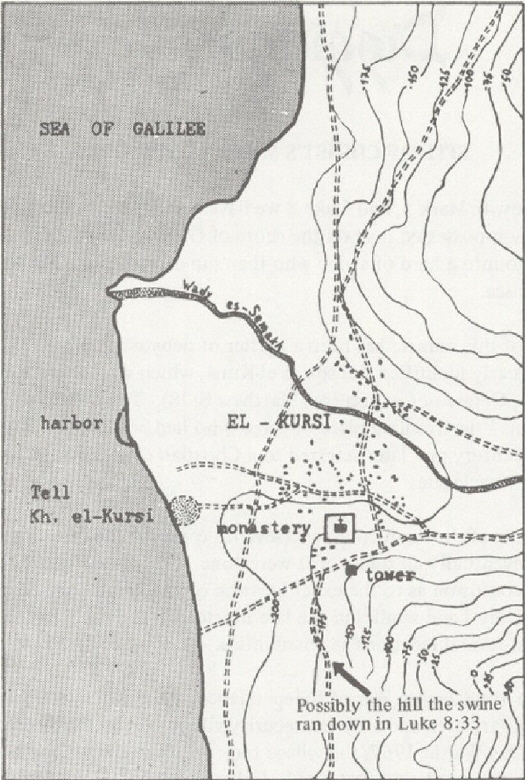Site Of Christ’s Miracle Identified -- By: Anonymous
Journal: Bible and Spade (First Run)
Volume: BSP 01:3 (Summer 1972)
Article: Site Of Christ’s Miracle Identified
Author: Anonymous
BSP 1:3 (Summer 1972) p. 79
Site Of Christ’s Miracle Identified
In Matthew 8, Mark 5, and Luke 8 we have parallel accounts of Jesus’ healing of a demon-possessed man on the shore of Galilee. He commanded the demons to go into a herd of swine who then ran down a steep hill to their death in the sea.
The site of this miracle has been a matter of debate in recent years. Early Christians clearly identified the site as el-Kursi, which was later known by its Greek name, Gerasa or Gergasa (see Matthew 8:28). The name was prophetic since it means “the dwelling place of those who had been driven out”. Writers in the fifth century and later referred to a Christian church which had been built at the miracle site.
At the time of the Arab conquest (seventh century) the church was destroyed and eventually all traces of it were gone. Consequently, there has been much confusion as to the exact location of the miracle site. Scholars involved in Holy Land studies in the late nineteenth and early twentieth centuries named several locations as possibilities.
After the 1948 Jewish War of Independance, the el-Kursi district was turned into a military area and a Syrian security village was established there. During the Six-Day War in 1967, the village took an active part in the hostilities and was almost completely destroyed. Following the Six-Day War, the area was again opened to civilians.
Early in 1970, while building a road through el-Kursi, bulldozers unearthed pieces of pottery near the destroyed village. Israeli archaeologists were immediately notified. After examing the site they found that the destroyed village stood on a Byzantine site whose remains were almost invisible on the surface.
In July and August of 1970, a relief excavation was carried out by the Department of Antiquities and Museums and the Military Government. The excavators soon found the remains of a fortified monastery dating to the fifth century. Of the several monastery structures, only the church, which stands at the center of the compound, has been examined. The rooms of the church were found to have beautifully colored mosaic floors. While cleaning one of
BSP 1:3 (Summer 1972) p. 80

Map of the El-Kursi area
the floors in preparation for photographing, a stone slab with an iron ring at its center was noticed. When the slab was raised, the archaeologists found a magnificent crypt, in a perfect state of preservation. About 30 skeletons were found in the crypt. All were male a...
Click here to subscribe
